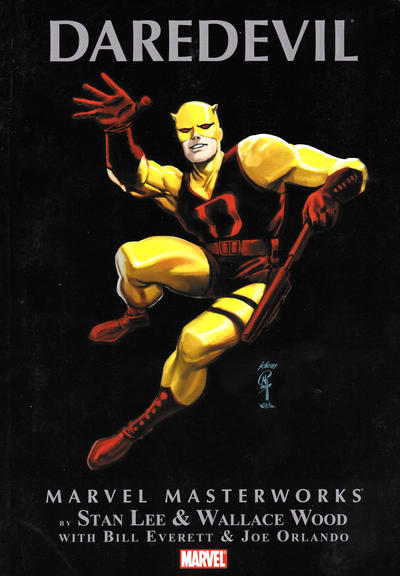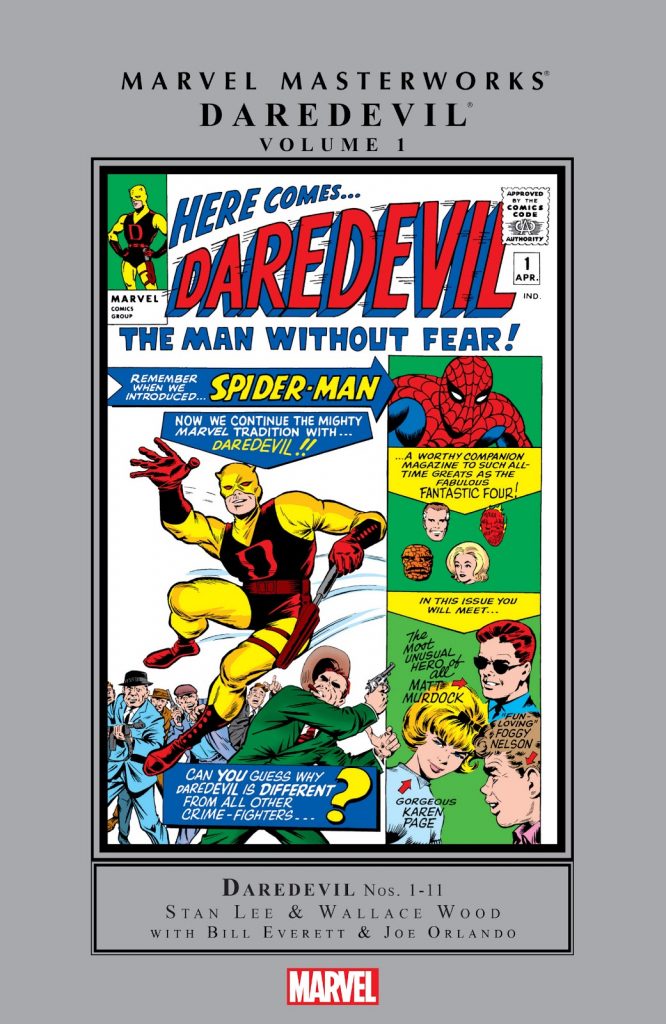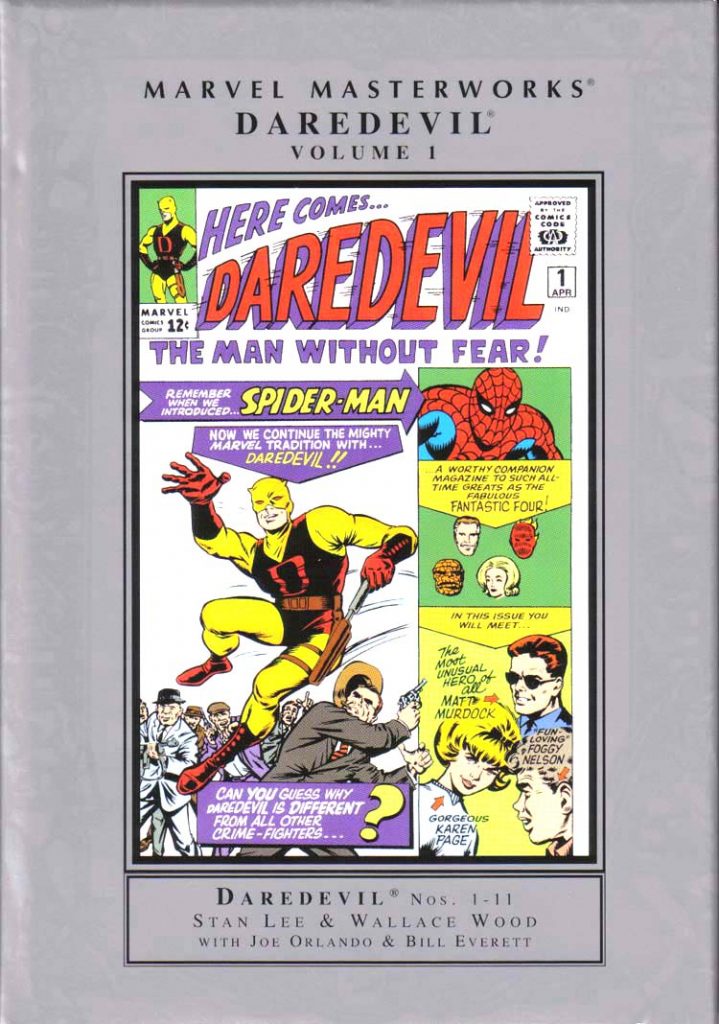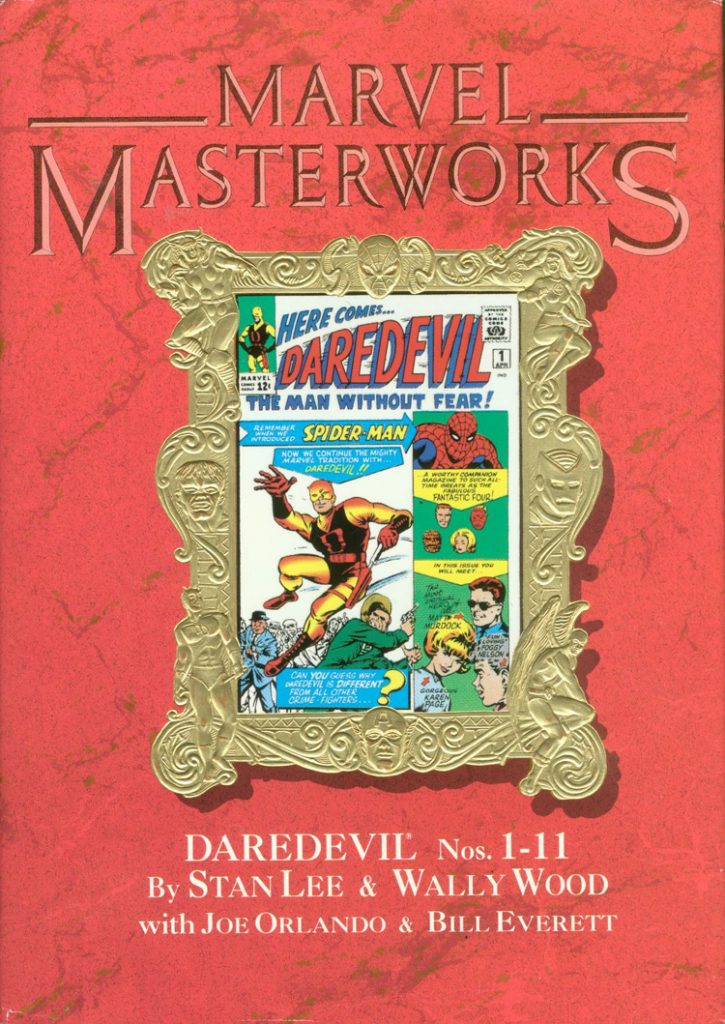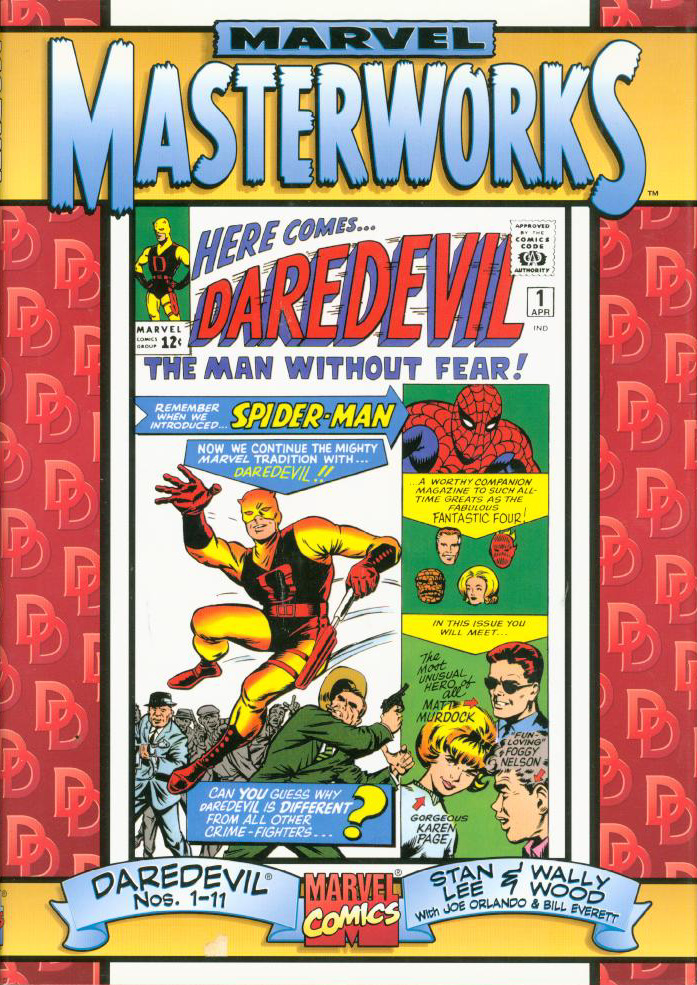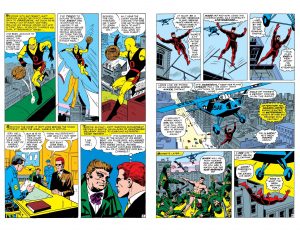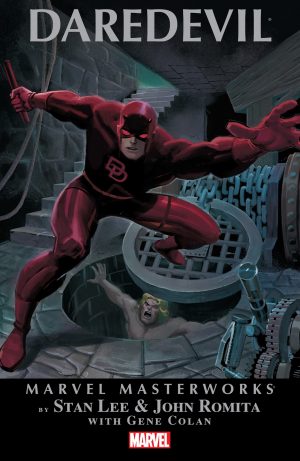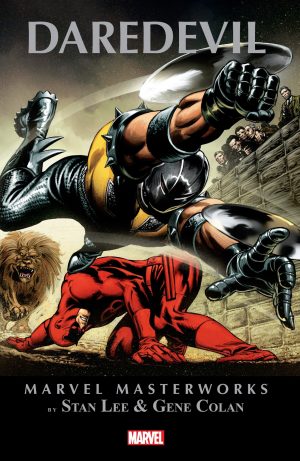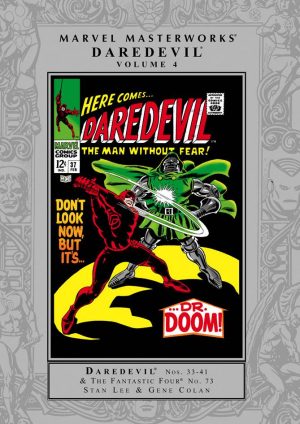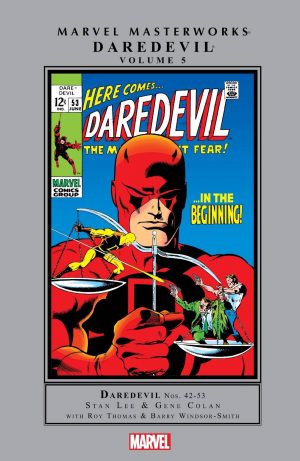Review by Win Wiacek
Daredevil, the Man Without Fear arrived in 1964 as the final 1960s superhero introduced by Marvel in their own title, and in retrospect the visual variety of the first few issues seems a risky venture. Yes, Bill Everett, Joe Orlando, Bob Powell and Wally Wood were all seasoned, talented veterans, but not to the young kids who were the audience. Most importantly, they just weren’t Jack Kirby or Steve Ditko, and new features need consistency and continuity.
Still, Stan Lee and his rotating line-up of artists concocted some extremely engaging tales until the latest Marvel Sensation found his feet, and the fascinating transition of moody masked avenger to wisecracking Scarlet Swashbuckler can be enjoyed in one effervescent package of thrills and spills beginning with ‘The Origin of Daredevil’. This much-retold tale recounts how young Matthew Murdock grew up in New York’s slums, raised by his father Battling Jack Murdock, a second-rate prize-fighter. Mocked by kids who sarcastically dub him “Daredevil”, Matt secretly trains his body to physical perfection, and his life changes when he saves a blind man from a speeding truck, only to be struck in the face by its radioactive cargo. His sight is burned away forever but his other senses are super-humanly enhanced and he gains a sixth, “radar-sense”. Years later the costumed identity follows as he avenges the mob murder of his father, by which time he’s graduated from law school, met his partner Foggy Nelson and hired secretary Karen Page. It’s nonsensical, yet visually engaging thanks to Everett, but barely hinting at the magic yet to come.
It’s not until the fourth issue that Lee begins to find a direction, introducing the Purple Man, a villain who could exert total control over anyone who saw him, although Orlando’s uncomfortable and over-busy art (sample spread left) is thankfully replaced by Wood for the next story. Wood’s lush, lavish work supplies power, grace and beauty (sample spread right). At last this costumed acrobat seemed to spring and dance across the rooftops and pages, while Wood’s contribution to the plotting didn’t hurt either. He developed a cool, no-nonsense hero who looked commanding and fed him into intoxicating action scenes. The final touch, applied with no fanfare at all, was Wood replacing the original yellow and black costume with the iconic and beautiful all-red outfit we know today. As one pithy commentator stated “the original costume looked as if it had been designed by a blind man”.
The story in which the costume change occurs features Prince Namor, the Sub-Mariner, and is still a gem. It has Namor in court suing mankind for damage to his undersea kingdom, some brilliant oration from Murdock the lawyer, and displays the dauntless courage of Daredevil and nobility of the Sub-Mariner.
In addition to the Purple Man, these stories introduce long-running villains the Owl, Stiltman, Mr Fear, and the Matador, and begin the romantic sub-plot of Foggy adoring Karen, who only has eyes for Matt, who loves her, but won’t let her waste her life on a blind man.
With a brace of glorious pin-ups by Wood, this sleek compendium offers a few bumpy false starts before blossoming into an example of Marvel’s compelling formula for success: smart stories, human characters and magnificent illustration.
This material is alternatively available along with the content of the following three Marvel Masterworks editions in a Daredevil Omnibus, or alternatively in black and white in Essential Daredevil Vol. 1. Next time: Another new artist!
